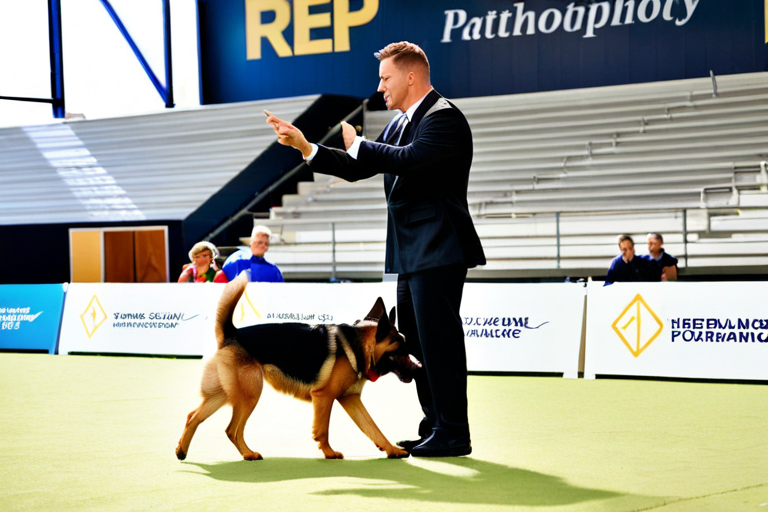The Ultimate Guide to American Dog Shows: From Westminster to Local Competitions
"In the world of purebred dogs, the show ring represents the pinnacle of breeding excellence and canine perfection." - American Kennel Club

The Crown Jewel: Westminster Kennel Club Dog Show
Since its inception in 1877, the Westminster Kennel Club Dog Show has stood as America's most prestigious canine competition. Held annually at New York's Madison Square Garden, this legendary event attracts over 3,000 purebred dogs competing for the coveted Best in Show title.
What sets Westminster apart isn't just its longevity, but its unique qualification requirements. Unlike most shows where any registered purebred can enter, Westminster maintains strict entry criteria that ensure only the nation's top dogs compete. The atmosphere crackles with anticipation as handlers in formal attire present their perfectly groomed charges before expert judges who evaluate each dog against its breed standard.
Did You Know? The Westminster Kennel Club is older than the American Kennel Club itself, having been established when Ulysses S. Grant was president.
AKC National Championship: The Modern Classic
The AKC National Championship, held annually in Orlando, Florida, has rapidly become one of the most significant dog shows in the United States. With over 5,000 entries and extensive television coverage, this event showcases the breadth of American purebred dog culture.
What makes the AKC National Championship particularly compelling is its diverse competition format. Beyond traditional conformation judging, the event features agility trials, obedience competitions, and the popular National Owner-Handled Series. This comprehensive approach reflects the evolving nature of dog sports, where versatility and trainability are increasingly valued alongside physical perfection.

Specialty Shows: Celebrating Individual Breeds
While all-breed shows capture public attention, specialty shows represent the heart of serious dog breeding. These single-breed competitions, sanctioned by AKC parent clubs, bring together breed enthusiasts from across the country to evaluate breeding stock and advance their chosen breed.
Specialty shows offer unparalleled depth of judging, with experts who have dedicated their lives to understanding a single breed's nuances. The Golden Retriever Club of America National Specialty, for instance, typically draws over 1,000 entries and includes competitions in conformation, field trials, obedience, and tracking—a true celebration of the breed's versatility.
Performance Events: Beyond the Conformation Ring
Agility Competitions
American agility has exploded in popularity since its introduction in the 1970s. Organizations like the USDAA and AKC host major tournaments where dogs navigate complex obstacle courses with speed and precision. The AKC National Agility Championship, held annually, crowns national champions in multiple height divisions.
Obedience and Rally Trials
Formal obedience competitions test a dog's ability to perform precise exercises with minimal handler guidance. The AKC National Obedience Championship showcases the highest level of training achievement, while rally obedience offers a more accessible entry point for newcomers to dog sports.

Regional Powerhouses: Major Circuit Shows
Beyond the national spotlight, several regional shows have achieved legendary status within the dog show community. The Montgomery County Kennel Club show, dedicated exclusively to terriers, attracts the finest terrier specimens from across the globe. Similarly, the Beverly Hills Kennel Club show combines Hollywood glamour with serious canine competition.
The Erie Kennel Club show in Pennsylvania, one of America's largest outdoor dog shows, typically draws over 3,000 entries across its multiple-day format. These regional powerhouses serve as crucial qualifying events for national championships while maintaining their own distinctive characters and traditions.
The Judging Process: Art Meets Science
Understanding how dogs are evaluated helps appreciate the complexity of these competitions. According to AKC guidelines, judges evaluate each dog against its breed standard—a detailed description of the ideal specimen. This involves assessing structure, movement, temperament, and overall balance.
The process begins with individual examination, where judges physically assess each dog's conformation. Dogs then move around the ring, allowing judges to evaluate their gait and movement. The final selection involves comparing dogs against each other within their breed, group, and ultimately for Best in Show.
Expert Insight
"The best judges combine technical knowledge with an eye for overall type and balance. They're not just looking for individual features, but how everything comes together to create a dog that can perform its original function." - David Frei, former Westminster Kennel Club Director of Communications
Getting Started in Dog Shows
For those interested in entering the world of dog shows, the path begins with proper preparation. The AKC's beginner resources provide comprehensive guidance on everything from selecting a show-quality puppy to understanding entry procedures.
Local kennel clubs often host handling classes and match shows where newcomers can gain experience in a low-pressure environment. Many successful exhibitors begin by attending shows as spectators, learning the rhythms and rituals of competition before entering the ring themselves.

The Future of American Dog Shows
As we look ahead, American dog shows continue to evolve. Increased emphasis on health testing, temperament evaluation, and performance capabilities reflects changing attitudes toward responsible dog ownership. Digital streaming has made major events more accessible than ever, while social media has created new opportunities for fan engagement.
Organizations like the AKC are working to balance tradition with innovation, ensuring that dog shows remain relevant while preserving the standards that have guided purebred dog breeding for generations. The introduction of new breeds to the AKC registry and the growing popularity of performance events suggest a vibrant future for American canine competitions.
Experience the Magic
Whether you're a seasoned exhibitor or curious spectator, American dog shows offer something for everyone. From the glittering spectacle of Westminster to the grassroots enthusiasm of local competitions, these events celebrate the extraordinary bond between humans and their canine companions.
Sources: Westminster Kennel Club, American Kennel Club, United States Dog Agility Association, various breed club publications and historical records.